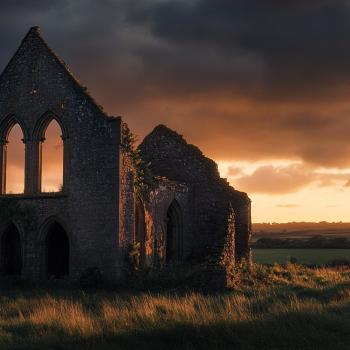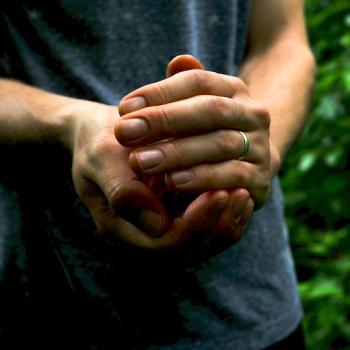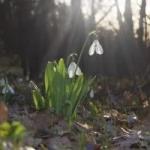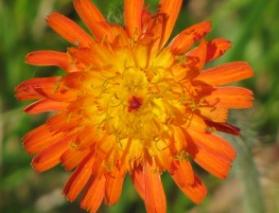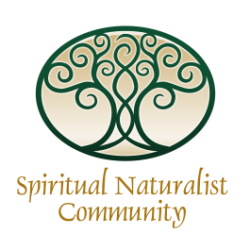 In the Grand Portage Indian Reservation on the North Shore of Lake Superior, there is an old, stunted tree known as the Spirit Tree (pictured here). The tree was given its designation by the Native Americans living in the area. It is a northern white cedar, Thuja occidentalis. These trees have the ability to grow out of the basaltic rock of the area where there is seemingly no soil. With their roots cleaving to and penetrating the rocks and their trunks and branches curling over the water, they can seem more crystallizations of the rocky cliffs than living things.
In the Grand Portage Indian Reservation on the North Shore of Lake Superior, there is an old, stunted tree known as the Spirit Tree (pictured here). The tree was given its designation by the Native Americans living in the area. It is a northern white cedar, Thuja occidentalis. These trees have the ability to grow out of the basaltic rock of the area where there is seemingly no soil. With their roots cleaving to and penetrating the rocks and their trunks and branches curling over the water, they can seem more crystallizations of the rocky cliffs than living things.
As far as white cedars go, there is nothing really special about the Spirit Tree — there are many others like it along the coast. Yet, located at the tip of a headland that served as an important navigational point — both for the Native Americans and for the voyageurs — it does stand out.
If you should find yourself in this rather remote part of the United States, don’t go searching for the Spirit Tree. The tree had become such a destination for tourists that, to protect it, the reservation council made it off-limits to visitors. This is partly the fault of the artist George Morrison, an Ojibwa from the reservation whose many paintings of the tree brought it widespread attention. (Google “George Morrison Spirit Tree” and click Images to see some of these paintings as well as other works by this wonderful artist.)
People have said that the spirit tree is “sacred” to the Native Americans of the area. I am not sure if this English word really conveys the Native American experience, but it is probably the best we can do.
Sacredness
Dictionary definitions of the word “sacred” include: worthy of religious veneration; of or related to religion; entitled to reverence and respect. The definition of the word “reverence” includes the idea that it “involves a humbling of the self in respectful recognition of something perceived to be greater than the self.” I think this notion of something greater than the self, whether it be a spirit, a deity, or a power of nature, gets to the essential idea. The sacred transcends the self; to be close to the sacred is to be in proximity to this greatness.
In his book, The Sacred and the Profane, Mircea Eliade tries to give a sense of what the experience of the sacred means to religious people and contrasts this with the experience of the secular. He writes: “…for primitives as for all premodern societies, the sacred is equivalent to power, and in the last analysis, to reality. The sacred is saturated with being….Thus it is easy to understand that religious man deeply desires to be, to participate in reality, to be saturated with power.”
Eliade’s use of the word “reality” might be a bit jarring to the naturalistic sensibility. A scientific person is concerned with knowledge and considers the real to be that which is verifiable. But a religious person is concerned with holiness, which is to say, the wholeness of his or her being. For a religious person. to be more whole is to be more real.
A sacred object is always both an ordinary object and a representative of something that transcends the ordinary. In this sense the ordinary object is a symbol for something that is extra-ordinary. For a religious person a sacred object is always more than a symbol. We who do not recognize its sacredness, however, can at least appreciate its symbolic value.
Eliade writes, “a symbol speaks to the whole human being and not only to the intelligence.” As a symbol the Spirit Tree certainly speaks to me. The North Shore is a very elemental place — rocks, water and sky predominate. Living things seems a little out of place here, a little precarious. The Spirit Tree and the white cedars in general bring to mind the mystery of life and how it arises from the non-living. And they certainly are an apt symbol for the tenacity of life in a harsh environment. Perhaps it was this later, a reflection of the tenacity also required of the people who inhabited this environment, that drew the attention of the Native Americans in the area to the Spirit Tree.
Naturalism and the Sacred
However we define the sacred, from a naturalistic point of view it can only refer to something subjective; it is not something that adheres to the objective world. Thus I find it interesting that a lot Naturalists embrace the word “sacred.” This is typified by the title of one of the notable books of Spiritual Naturalism, Ursula Goodenough’s The Sacred Depths of Nature.
I once asked Paul Harrison, who originated the World Pantheist Movement, about his use of the word “sacred.” He said that in using it he did not mean to imply that sacredness is an objective quality of the world, rather that we should respect the subjective feeling of awe and reverence for Nature that is implied by the word “sacred.” I’m certainly in sympathy with this viewpoint.
There are places that I would love to declare sacred — places with a beauty that humbles me yet fills me with joy. Indeed, for me and many of my fellow Minnesotans, a number of these places are on the North Shore of Lake Superior. Yet, the mere fact that I find these places sacred doesn’t mean much. It certainly won’t stop the developers from tearing them up, as they get rich satisfying the desires of tourists and cabin owners. On the North Shore, as in so many other places, a kind of selfish love of nature is rapidly destroying much of the character that made the area so lovable in the first place.
Though the modern world has largely abandoned an adherence to the sacred, it seems that a lot of people still seek to experience it, even people who know that what they seek is only subjective. What is it that drew so many to the Spirit Tree that the reservation council made it off-limits? What is it that draws so many people today to endure the rugged pilgrimage along the Camino de Santiago? There are now dozens of books and a rather good Hollywood movie about people’s pilgrimage along the Camino. What are all these people seeking?
Goodenough uses the phrase “sacred depths” in her title, and I think it’s the second word that might explain what people are seeking. It is the experience of the depths of being, the experience of one’s being when it is undistracted by the minutia of profane life. This experience is something that really does exist, even if its existence is as a subjective experience. And though it is subjective, it seems to be a universal experience — people from all areas of the world and from all times of history honor such an experience.
I am not sure that our culture has fully dealt with the idea of a “universal” subjective experience. Yet, considering that the human brain can be thought of as a mechanism — a mechanism with the unusual ability to generate subjective experience — and given that healthy human brains are largely alike, the existence of universal subjective experience seems not only likely, but inevitable. Perhaps this is why even as naturalism has desacralized the world, we still seek the sacred.
The Pilgrimage Within
I understand and sympathize with people who seek the experience of the sacred. But I don’t think seeking it in the sacred places of other and earlier people is the best strategy. One may find a frisson of depth in the sacred places of aboriginal people. But as many such peoples have commented, this tourism to their sacred places seems to be just another aspect of imperialism, another form of exploitation.
The sacred depths are not out there, but inside. The journey to the sacred depths is not to be counted in miles walked in pilgrimage, but in the heedfulness we bring to our own life and the everyday environment in which we live it. The journey to our own sacred depths may be a harder and longer journey than the pilgrimage to Compostela and on to Finisterre. But if we finally make it to lands end, to the roots of our being, we will find our very own sacred tree — our Spirit Tree, Bodhi Tree or Yggdrasil. And once we have discovered that tree for our selves, nobody can set it off limits to us.
Learn about Membership in the Spiritual Naturalist Society
__________
The Spiritual Naturalist Society works to spread awareness of spiritual naturalism as a way of life, develop its thought and practice, and help bring together like-minded practitioners in fellowship.



